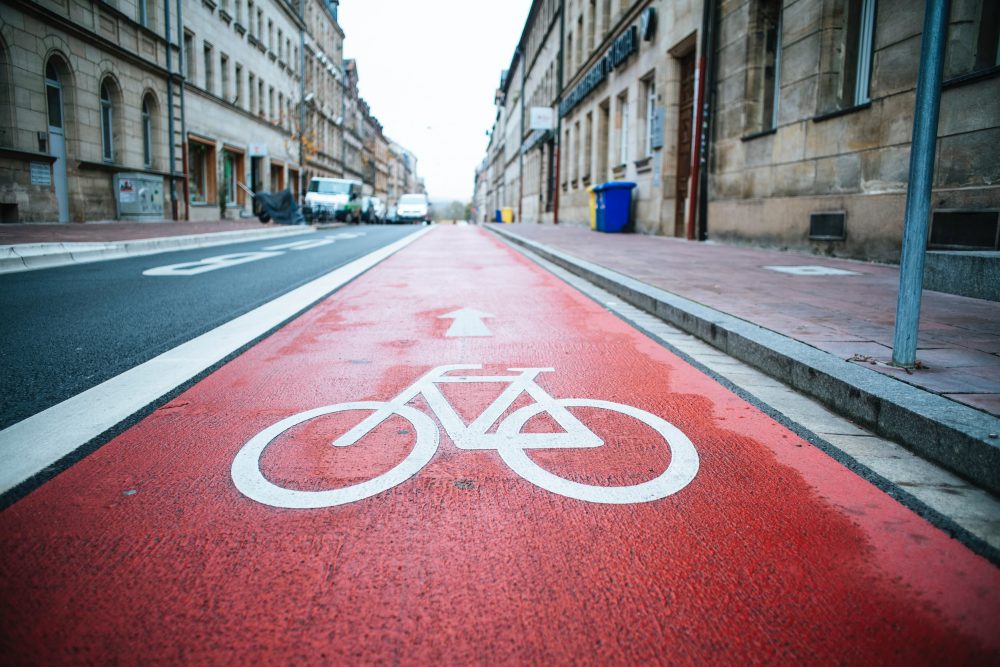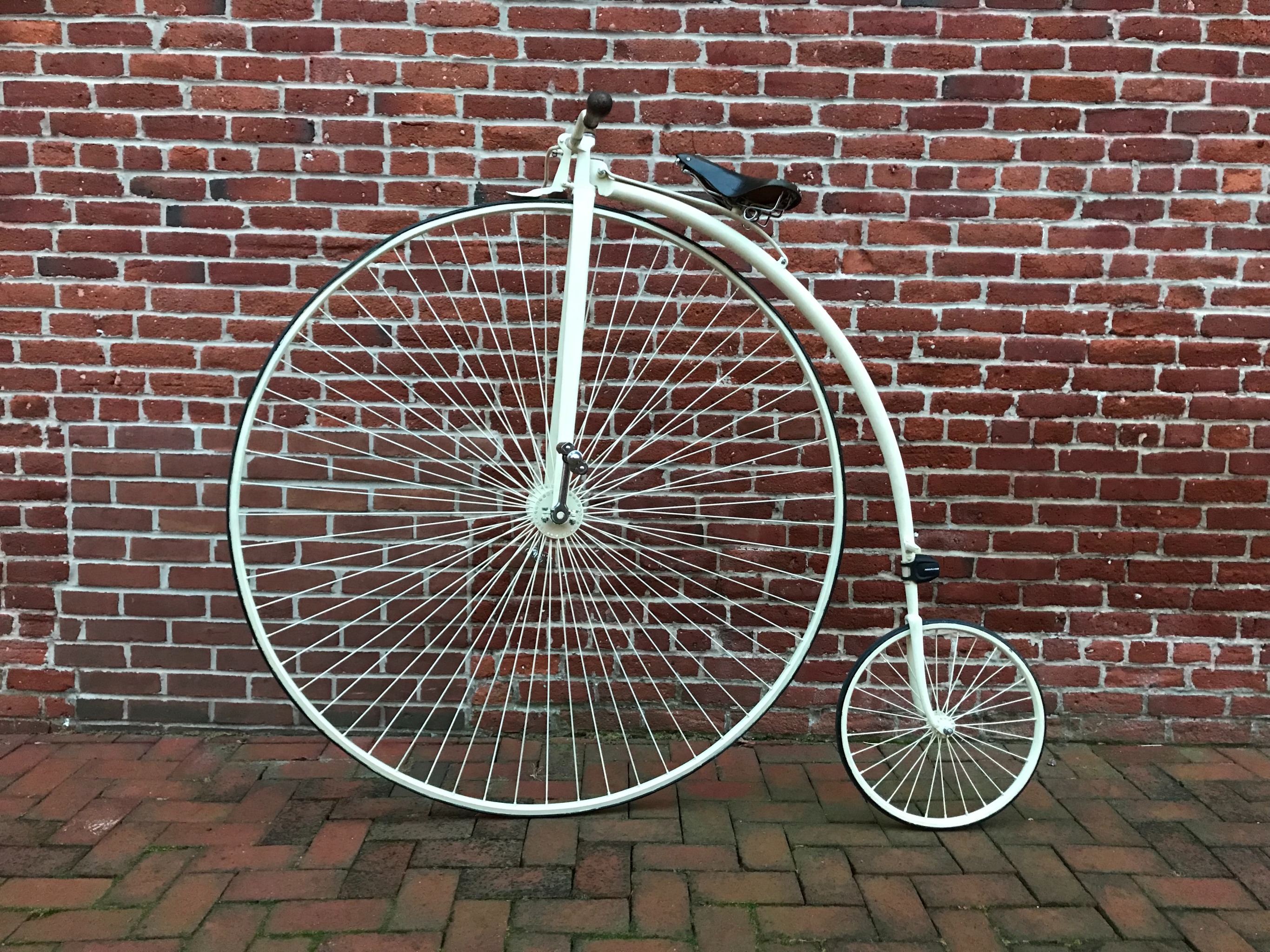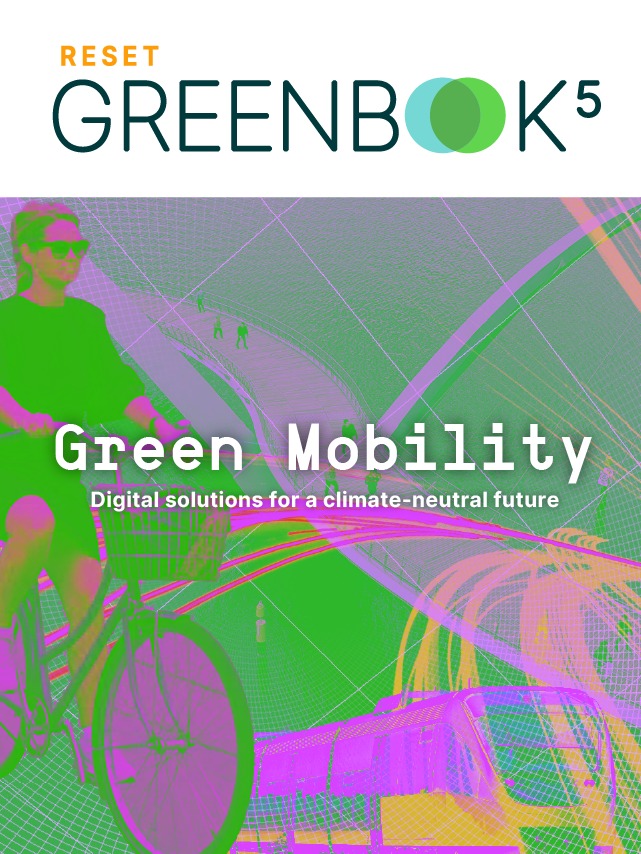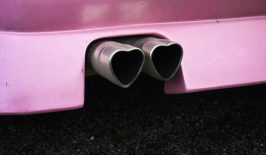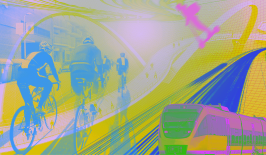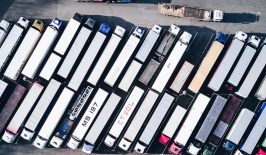Many people are choosing to reduce their carbon footprint and improve their daily commute by swapping four wheels for two. From improved public health to reduced congestion, it’s clear that bikes can play a crucial role in the transition to a greener future. But what exactly does it take to make a city bike-friendly? And, how can technology help to make cycling a more accessible option for everyone?
The Timeless Significance of the Bicycle
For centuries, the bicycle has been a symbol of freedom and simplicity. From the penny-farthings of the late 1800s to the sleek, high-tech e-bikes of today, bicycles have been a constant presence in our streets and communities, allowing people with even moderate mobility to get almost anywhere with a push of the peddle.
And now, in the face of a rapidly changing world and a growing need for more sustainable transportation options, the bicycle is once again stepping up to play a crucial role in the green mobility transition. The green mobility transition refers to the shift away from fossil fuel-powered transportation towards more sustainable modes of transportation. With its undeniably low environmental impact, the bicycle is ready to lead the way toward a greener, more sustainable future.
The Impact of Increased Bicycle Usage in Cities
Imagine a city where the air is clean and crisp, the streets are less congested and people are healthier and happier. This is the reality for cities where bicycle usage is on the rise. Currently, the Netherlands is the record-holder for the country with the most cyclists, with almost exactly as many bicycles as citizens. But the city with the most cyclists is actually Denmark’s capital, Copenhagen. Almost 62 percent of Copenhagen’s population use a bicycle for their daily commute to work or school and the city ranked first in terms of cyclist accessibility, right before Amsterdam (NL), and Utrecht (NL).
Increased bicycle usage leads to a range of benefits that directly impact the quality of life for city dwellers.
Firstly, it significantly improves air quality by reducing the number of harmful pollutants emitted from cars and other vehicles. Riding a bike instead of driving once a day can cut down transportation emissions by 67 percent, according to Oxford University’s study.
Secondly, it reduces congestion on the roads and makes commuting quicker and more efficient. Commuting with just one person per car is often inefficient, taking up space and wasting energy to run the vehicle.
Thirdly, it promotes public health by encouraging physical activity and reducing sedentary lifestyles. Riding a bike, just like walking, is a type of active transportation that needs physical activity to move forward. A study in the UK showed that commuting by bike is associated with a 45 percent lower risk of getting cancer and a 46 percent lower risk of heart disease compared to driving or taking public transportation.
And lastly, it has a positive impact on the local economy by reducing transportation costs, promoting local businesses and creating new jobs in the bike industry.
In 2010, 7.4 percent of Europeans chose a bike as their main form of transportation, covering a total of 94 billion kilometres. The overall economic benefits of cycling in the EU are estimated to be at least 232 billion USD. Whether you’re a daily commuter, a recreational rider or simply someone looking for a better quality of life, there’s no denying the incredible impact that bicycles can have when compared with vehicle use.
The Real Cost of Cars
Everyone who owns a car knows how costly it can get. Beyond the purchase maintenance, gas, tax and additional fees can drive up the price immensely. But as a study, published in “Ecological Economics” showed, the real cost of cars is much higher.
They identified 23 factors that might not immediately come to mind but need to be taken into account. Costs for the driver’s licence, parking, and toll fees — but also waiting times in traffic jams will impact the individual’s wallet directly. Simply waiting in traffic can add up to a whopping 555 euros to bills per year. Additionally, air pollution, land consumption, maintenance of roads and infrastructure, noise, climate impacts, and restrictions for people travelling by bike or on foot will impact the public and amount to around 5,000 euros per year per car.
The Necessary Infrastructure for a Bike-Friendly City
Despite all their benefits, why is it that bicycles are still not the vehicle of choice for everyone? Only about 7 percent of urban trips are completed with a bike, according to a 2014 report by the Institute for Transportation & Development Policy. The answer could well lie in the lack of proper infrastructure to support and encourage bicycle usage.
To truly make the bicycle a viable option for all, cities must invest in the necessary infrastructure to support this mode of transportation. This includes dedicated bike lanes and paths to ensure the safety of cyclists, secure bike parking to provide peace of mind for riders, maintenance and repair stations to keep bikes in good working order and integration with public transportation to make it easy for cyclists to travel longer distances. When these elements are in place, the bicycle truly has the potential to become the vehicle of choice for all, leading to a greener, more sustainable future for our cities.
The Role of Digital Tools in Promoting Bicycle Usage
In a world where technology is increasingly intertwined with our daily lives, it’s no surprise that digital tools can play a crucial role in promoting bicycle usage. From bike sharing and rental systems that make it easy for people to try cycling for the first time, to navigation and route planning apps that help riders find the safest and most efficient routes, technology is making the bicycle more accessible and convenient than ever before. And with the advent of electronic bike lock systems, cyclists no longer have to worry about their bikes being stolen, giving them even more confidence to take to the streets.
Finally, integration with smart city systems, such as traffic management and public transportation systems, is helping to create a more seamless and integrated cycling experience for riders.
How Digital Technology Is Paving the Way for Smarter and Safer Cycling
Bigger projects like CycleStreets, a social enterprise that provides local cycling app services in the UK with their “Cycling API” or “OpenStreetMap” allow users to access the most suitable cycling routes. Metadata such as quietness, elevation change, as well as images posted by other users, help to inform users and allow local authorities to gather data on bicycle use to justify new bike lanes or car-free zones. Their API is, for example, part of “Better by Bike”, an initiative in the West of England aiming to get their citizens to ride bikes for their health, for commuting, or just for the enjoyment of it.
In the Netherlands, the “ANWB”, “The Royal Dutch Touring Club”, a travellers’ association, offers the “Eropuit” app. It shows users a wide range of ideas and information for outdoor activities, including cycling and walking routes, as well as outings.
With options for pre-made ANWB routes, member-created routes, or the ability to create your own, there’s something for every kind of cyclist. You can even report bike theft to the authorities over the app.
What makes this app stand out is its integration with other services and activities, like a card payment service or discounts on local offers and activities.
The bike is also getting a new digital upgrade in Germany. Coming in third place on the ranking of most bicycles per capita, it’s no wonder there are more and more German projects innovating the way their citizens navigate, rent and ride.
The bike-community app “Bike Citizens” is a comprehensive cycling solution that goes beyond just a navigation app. The company works in collaboration with cities, businesses, and organizations to support cycling through software solutions, communication, and marketing efforts. Founded in 2011 by bicycle couriers Daniel Kofler and Andreas Stückl, Bike citizens has grown to include locations in Graz and Berlin and a team of over 30 employees. With availability in over 450 cities across 30+ countries, the app makes relaxed and safe cycling accessible to all.
As a core service, the app provides navigation for cyclists of varying experience levels, guiding them along cycle paths and low-traffic side streets to their destination. They promote safe and relaxed cycling, particularly for newcomers and families with children. But even experienced cyclists may discover new routes through the app.
Across the country, bicycle innovation is taking shape, too. “MunichWays” in Munich, “SiBike” in Marburg, and “PrioBike” in Hamburg all offer similar benefits and more. What all of these projects have in common is their shared goal to improve traffic for cyclists using the power of digitalization. Some offer optimized routes to avoid traffic or create an artificial green wave by suggesting the perfect speed to hit green light after green light. All the collected data also helps to find blind spots in the bicycle infrastructure of a city and will help improve bike lanes and intersections in the future.
This could, for example, initiate projects like the “Radbahn Berlin”. This bicycle path project has been in the making for a few years and, once completed, could change the heart of the city, especially for cyclists. The idea is to reclaim and revive that largely unused concrete space below one of the elevated main public transport lines and turn them into a “green artery” that would allow cycle traffic to flow more freely and be protected from other traffic. As for now, a first trial track has been opened to test before renovating the whole route.
Green Mobility – Digital solutions for a climate-neutral future
Autonomous vehicles, e-mobility, AI-controlled traffic planning, new modes for moving from A to B — what will the mobility of tomorrow look like?
We present the digital solutions being proposed for climate-neutral transport and logistics and discuss the new challenges of “digital mobility” in this dedicated special feature.
Bikes and Technology Team Up for a Greener Tomorrow
As these projects show us: you don’t need to reinvent the wheel to imagine a greener future. The bicycle plays a vital role in the green mobility transition. From improving air quality and reducing congestion to promoting public health and economic growth, the benefits of increased bicycle usage are clear and numerous.
The key to unlocking the full potential of the bicycle is through investment in proper infrastructure and technology. With dedicated bike lanes, secure parking, and easy-to-use digital tools, cities can create a thriving cycling culture and lead the way toward a greener, more sustainable future.
